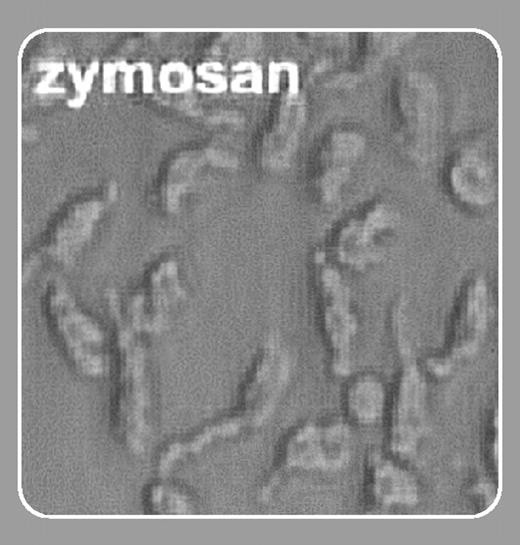And who could be truly surprised? Toll-like receptors (TLRs) are orthologs of combined developmental polarization and host defense proteins identified in the fruit fly, Drosophila melanogaster, and respond to molecular motifs that are distinct and unique features of bacterial, fungal, and virus pathogens (reviewed in Heine and Lien1 and references within). Neutrophils are the primary and pivotal cells providing innate host defense against these same invading bacterial and fungal pathogens—how could neutrophils have evolved without a full set of these crucial pattern recognition receptors? In this issue, Hayashi and colleagues (page 2660) provide us with a thorough and thoroughly satisfying response to this question, demonstrating that human peripheral blood neutrophils express not only TLRs 2 and 4, as previously recognized, but also TLRs 1, 5, 6, 7, 8, 9, and 10, indeed all of the known TLRs save for the elusive double-stranded RNA receptor, TLR3. Moreover, the authors have shown that agonist-mediated TLR activation is intimately associated with all that neutrophils do best: phagocytosis, selectin-shedding, generation of superoxide, and production of the cytokines and chemokines, most notably interleukin-8. As a result of this study, interactions among TLRs and TLR ligands now add significant new complexities to the study of neutrophil activation in vitro. Equally important, we can now interpret the findings of in vivo experiments involving specific TLR deficiencies, both naturally occurring and genetically engineered, with the added dimension of neutrophil function in mind.FIG1
The following questions are among those arising from this work: How do real-life, multivalent pathogens interact with the 9 known TLRs expressed by human neutrophils? Do neutrophils respond to TLR ligands in situ, or are they processed and presented to the neutrophils via mechanisms that have yet to be explored? Do the neutrophil TLRs interact with one another to form multicomponent networks similar to those that have been postulated for macrophages and dendritic cells?2 Are signals transduced as part of individualized or completely interchangeable pathways?
While the answers to these questions may take some time to emerge, we can consider human neutrophils as completely equipped to participate in full.


This feature is available to Subscribers Only
Sign In or Create an Account Close Modal